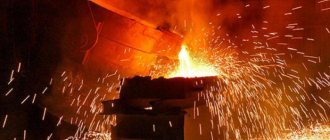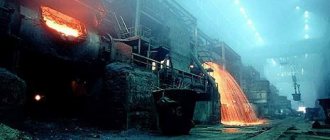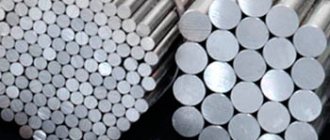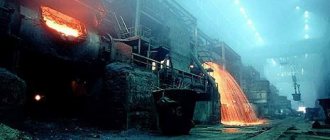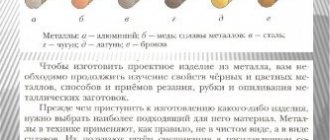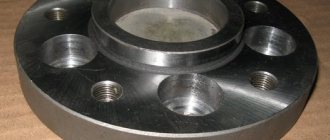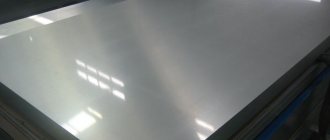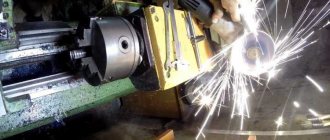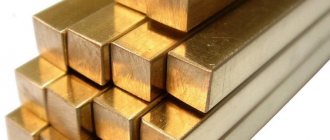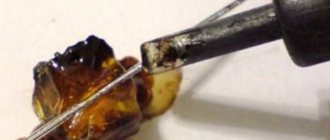Jewelers do not limit their work to gold, silver and platinum. Base metals are cheaper, and jewelry made from them is beautiful, strong and durable. We will talk about the main base metals and alloys that are used in jewelry. And so that when searching for jewelry on foreign resources you can figure out what they are made of, we add an English equivalent of the name to the Russian one.
Photo: pixabay.com
Titanium
Hard, light, very durable and damage-resistant, titanium is even used in space technology and is called the “metal of the future.” When heated, oxidized, or mixed with other elements, the silvery-white metal takes on a variety of hues, ranging from straw to purple.
Although working with titanium is not easy, it is now at the peak of popularity among jewelers. Masters create unusual collections using its ability to shimmer with all the colors of the rainbow. If you see bright purple, blue, or other bright metal jewelry, it's likely titanium. Processing costs several times more than the metal itself, so the price of products is usually high. But wedding rings, bracelets, cufflinks and other titanium jewelry weigh less than gold and platinum.
Photo: Littletricks jewelry brand
Stainless steel
What distinguishes stainless steel from ordinary steel is the addition of chromium to the alloy of iron and carbon. It is chromium that protects it from corrosion: it creates a thin film on the surface that self-heals when damaged.
Known as "surgical grade" stainless steel, 316L stainless steel is widely used by jewelers today. It is stronger than precious metals, hypoallergenic, does not darken in air, and is resistant to ultraviolet radiation and sea water. It is used to create chains, bracelets, rings and earrings. Stainless steel is often used for piercing, combined with stones, glass and wood. Steel jewelry fits organically into any style - from ethnic to avant-garde.
Photo: pixabay.com
METHODS OF PROTECTION AGAINST CORROSION, THEIR EFFECTIVENESS
There are numerous ways to protect metal from damage or rust. The choice of one method or another is determined by the specific operating and storage conditions of metal products. The most widely used are: steel alloying, metal coating, electrochemical protection.
Alloying is most effective under conditions of mechanical stress and a corrosive environment. Alloying also helps prevent corrosion cracking of products.
For example, the group of steels with special chemical properties includes corrosion-resistant steels. They are obtained by introducing significant additions of chromium or chromium and nickel into carbon and low-alloy steels. With a chromium content of 13, 17 and 25%, chromium steels are not only corrosion-resistant, but also heat-resistant. Chrome-nickel steels have greater corrosion resistance than chromium steels and are widely used in the chemical industry.
Metal coatings are applied to the surface of a product with a thin layer of metal that is sufficiently resistant in a given environment. This coating also gives the surface layers of metal products the required hardness and wear resistance. There are two types of coatings - anodic and cathodic. For iron-carbon alloys, such an anodic coating can be a coating of zinc and cadmium. In water and in humid air, zinc is covered with a layer of basic white carbon dioxide salt, protecting it from further destruction. Zinc coatings are widely used to protect fittings, pipes and tanks from water and hot liquids.
Metal coatings are applied in various ways. The most commonly used method is hot method, galvanization and metallization.
With the hot method, the product is immersed in molten metal, which wets its surface and covers it with a thin layer. Then the product is removed from the bath and cooled. Using this method, the product is coated with a layer of tin or zinc. Tinning is used in the manufacture of tinplate, in the installation of coatings on the internal surfaces of food boilers and other products. Galvanizing protects, for example, roofing iron and water pipes from corrosion.
In the galvanic method, metal products are placed in a galvanic bath. Under the influence of electric current, cathodic deposition of a film of protective metal occurs on the surface of the product. The thickness of the coating can be adjusted within a wide range. Coatings are also obtained by spraying molten metal using special metallization guns and spraying the protected metal onto its surface. This type of protection is used for large-sized structures: railway bridges, etc. Aluminum, zinc, chromium, and corrosion-resistant steels are used as protective metals.
Non-metallic coatings are made from varnishes, paints, enamels and other substances and isolate the product from the effects of the external environment. They are easily applied to the product, close pores well, do not change the properties of the metal and are relatively cheap. During storage and transportation, metal products are coated with special lubricants, mineral oils and fats. To protect products operating in highly aggressive environments, plastic coatings made of vinyl plastic and polyvinyl chloride are used.
Chemical coatings - protective oxide and other films - are created when metal is exposed to strong chemical reagents. Oxidation and phosphating of metal products are also widely used.
Oxidation is the creation of an oxide film on the surface of a product that is highly resistant to corrosion. It is most widely used for corrosion protection of products made of aluminum and its alloys.
Phosphating of steel products consists of creating a surface layer of manganese and iron phosphates. Phosphate coatings are subsequently used as a sublayer, often in combination with lubricants, to reduce friction when processing metals by pressure, drawing, and for good running-in of rubbing machine parts.
In some cases, they resort to protecting metals from corrosion using protectors. The essence of tread protection is that protectors - pieces of metal - are attached to the surface of the protected product. A galvanic couple is formed in which the anode is the protector and the cathode is the product. As a result, the protector is destroyed, protecting the product. In this way, for example, underwater metal parts of ships are protected by attaching zinc plates to them.
Tungsten (Tungsten)
Tungsten is hard, brittle and the most refractory of metals. It is mined from tungsten ores and in its raw form is similar to platinum. Pure tungsten is not used in jewelry, but when combined with carbon it becomes tungsten carbide, which is as hard as diamond.
Rings and bracelets are made from tungsten carbide. They are wear-resistant and practical, even after many years scratches and cracks do not appear on them. Such products do not fade and are not afraid of water and most acids. Tungsten jewelry is more in demand among men, but skilled craftsmen make elegant rings from it for strong women (more about tungsten rings in our article).
Violations detected during quality control of work.
After completing the work, rusting occurs on the surface of the treated metal, this is due to the fact that the temperature regime was not observed or the moisture was not completely removed. It is also possible that the metal is not sufficiently cleaned of oxides, which leads to subsequent corrosion. Insufficiently removed various contaminants, oil, soap, salts, all this will lead to damage to the paintwork and further rusting of the metal. The presence of dust on the surface being treated reduces adhesion. Which leads to peeling of the paintwork. Failure to maintain the time allowed for the metal to remain untreated leads to its rusting; interlayer holding must also be observed; the solvent does not have time to dissolve and it leaks through other layers. Which leads to disruption of the coating in the form of bubbling. All these violations identified during quality control must be corrected immediately.
Cupronickel (Melchior, Cupronickel)
Cupronickel is a copper-based alloy. Due to its nickel content, it is similar to silver, but much stronger. Cupronickel is easy to process, it does not rust or darken. Under the influence of chemical solutions, the silver alloy takes on new shades: from lilac to pink.
Cupronickel silver became most famous for the cutlery that was made from it in Soviet times. But it has also found its niche in jewelry: cupronickel is used to make jewelry with subtle patterns and ornaments. Turquoise, malachite, and amber are framed in the alloy, and jewelry made from it does not wear out for decades.
Cupronickel decoration. Photo: MADEheart.com
Anodic dissolution of magnesium protector.
Anodic dissolution of magnesium is characterized by a number of features. In neutral salt solutions, during anodic polarization of magnesium, the evolution of hydrogen is observed, which proportionally increases with increasing current density. In the theory of corrosion, this phenomenon is called the negative difference effect (negative differential effect). In the differential effect region, the current efficiency does not depend on the current density and is approximately 150% of the value calculated from the reaction Mg - 2e = Mg2+. In solutions of NaCl, NaBr and Na2SO4, the potential for anodic dissolution of magnesium is practically independent of the current density and is equal to -1.4 ÷ -1.5 V relative to a normal hydrogen electrode.
The curve of the dependence of the rate of hydrogen evolution on the current density for acidic electrolytes passes through a minimum, i.e. there is a transformation of the positive differential effect (a decrease in the rate of hydrogen evolution with an increase in current density) into a negative one. In alkali solutions, anodic polarization of magnesium is accompanied by passivation. In oxidizing environments, along with the evolution of hydrogen, reduction of the oxidizing agent occurs.
In order to explain these patterns, a number of assumptions have been made in the literature regarding the mechanism of anodic oxidation of magnesium. It was suggested that the anomalous dissolution of magnesium may be associated with the partial destruction of oxide films during the passage of an anodic current, which increases with increasing anodic current. At the same time, on the exposed active (non-oxidized) areas of the surface, the process of corrosion (self-dissolution) of magnesium proceeds intensively, accompanied by the release of hydrogen. According to Ya.M. Kolotyrkin and G.M. The Florianovich film theory can explain the reasons for the negative differential effect, if we assume that the overvoltage of hydrogen evolution on the oxide film is significantly higher than on pure magnesium.
During experiments, many researchers discovered metal particles in solution during anodic dissolution. Based on this, the theory of mechanical destruction or disintegration of metals was developed. Under the influence of anode current, the composition, porosity, thickness and adhesion of oxide films can change. Along with the film, metal particles can separate from the metal surface. These particles then interact with the solution, which leads to abnormal dissolution of the metal and excessive release of hydrogen.
According to the third hypothesis, the anodic dissolution of magnesium occurs in stages according to the following scheme:
Mg - e → Mg+ADS
Mg+ADS – e → Mg2+
Mg+solution+ H2O → Mg2+ + ½H2 + OH¯
This point of view is developed in most detail in the works of B.N. Kabanova and D.V. Cocoulina, who believe that the slow stage of the process is the ionization of magnesium with the formation of the Mg+ADS ion. The rates of the two subsequent parallel reactions do not directly depend on the state of the magnesium surface, but are determined by the concentration of monovalent magnesium ions adsorbed on the surface, and the stage Mg+ADS - e → Mg2+ is also a function of the electrode potential.
According to the scheme, hydrogen evolution occurs as a result of the interaction of desorbed monovalent magnesium ions with water, i.e. outside the double layer.
The reasons for the anomalous dissolution are most likely related to the mechanism of the self-dissolution process of magnesium alloys under current. Magnesium-based alloys in the absence of external current and during anodic polarization are subject to electrochemical corrosion, as well as chemical dissolution as a result of interaction with components of the aqueous environment. During electrochemical corrosion, the processes of reduction (cathodic reaction) and oxidation (anodic reaction) are accompanied by the transfer of electrons through the metal and are spatially separated:
• anode:
Mg0 - e → Mg+
Mg+ - e → Mg2+
• cathode:
2H+ + 2e → H2 or 2H2O + 2e → H2 + 2OH¯
In this case, the total reaction of magnesium dissolution can be written as follows:
Mg0 + 2H+ → Mg2+ + H2
or
Mg0 + 2H2 → Mg(OH)2 + H2
According to the chemical mechanism, the dissolution of magnesium also occurs with the release of hydrogen, but in this case the reactions proceed according to the equations:
• acidic environment:
Mg0 + 2H+ → Mg2+ + H2
• neutral and alkaline environment:
Mg0 + 2H2O → Mg(OH)2 + H2
It is very difficult to separate the processes of anodic dissolution, electrochemical and chemical corrosion. It is important to note that the amount of hydrogen released is equivalent to the amount of magnesium that was oxidized without the participation of an external current.
In the case of the electrochemical mechanism of corrosion, the intensity of hydrogen evolution is determined by the laws of electrochemical kinetics, therefore, a shift in the potential to the positive region should lead to a decrease in the amount of hydrogen, and, consequently, the rate of self-dissolution of magnesium.
The rate of chemical corrosion does not depend on potential, however, with increasing anodic current, the active surface of magnesium and the rate of its dissolution due to interaction with water increase.
If self-dissolution occurs predominantly by an electrochemical mechanism, then the introduction of inhibitors that increase the overvoltage of the cathodic reaction will reduce losses from corrosion when using magnesium and its alloys under conditions of anodic polarization.
Thus, magnesium and its alloys dissolve with low polarization, which indicates their effectiveness as protectors. However, they have a high rate of self-dissolution, which leads to a low efficiency of such protectors.
Nickel silver
Both in appearance and in characteristics, nickel silver is almost identical to cupronickel. It is distinguished only by the presence of zinc in the alloy. The metal, whose name translates as “new silver,” is ductile and durable. The increased nickel content makes it almost white, with a blue or greenish tint.
Jewelers readily use this alloy because of its similarity to silver and low cost. It is used to create jewelry with filigree and enamel, icon pendants, buckles, and wire jewelry. Sputtering of silver and gold makes nickel silver stronger, and the alloy retains its presentation for longer.
Nickel silver jewelry. Photo: [email protected]
Types of metal corrosion:
- processes are chemical and electrochemical
-by the nature of destruction, uniform and not uniform
- by type of corrosive environment: gas, liquid, atmospheric, soil
Chemical corrosion
Based on the reaction between metal and an aggressive environment. The result of this corrosion is the formation of scale on the metal, or in the case of copper, a green coating. This type of corrosion spreads evenly over the entire surface of the metal. Chemical corrosion does not affect metal as strongly as electrochemical corrosion.
Electrochemical corrosion
This is a process in which metals and alloys lose some of their electrons, they pass into an electrolytic solution formed on the surface of the metal in the form of ions, and the electrons replacing the metal atoms pass into the metal with a negative charge, a galvanic reaction is formed, resulting in the destruction of the metal . Metals used in construction are usually subject to electrochemical corrosion due to the presence of moisture on the surface of the metal, this is caused by a constant change in temperature, resulting in the formation of condensation.
Atmospheric corrosion
Atmospheric corrosion of metal is similar to the occurrence of electrochemical corrosion, due to the presence of air humidity. When humidity rises above 70 percent, intense loss of steel occurs. The corrosion process is also affected by the presence of aggressive elements in the environment such as carbon dioxide, sulfur dioxide,
uniform across the surface , but it does not pose a great danger if it does not reach critical levels of metal damage. Uneven is the most dangerous because it can form separate areas of damage to the metal, which will lead to a significant weakening of the elements of the metal structure.
It is impossible to completely avoid corrosion processes, but it is possible to reduce the impact of these processes.
There are several types of corrosion control measures.
Brass
Brass is alloyed from copper and zinc. In antiquity it was called “orichalk”, that is, “golden copper”, and legends were made that it was from it that the shield of Hercules was made. This ductile and easy-to-work alloy is nicknamed the “eternal metal” for its wear resistance. Brass itself is yellow, but additives give it golden, reddish and greenish hues.
Today, it is used to make openwork rings, bracelets, pendants and earrings, which are then silvered, blackened or plated with gold. Brass fits organically into vintage and ethnic style. Flexible and durable brass wire is used for handmade items such as wire wrap.
Photo: pixabay.com
Bronze
For about six thousand years, people have been familiar with bronze, an alloy of copper and tin. Bronzes are also considered alloys of copper with aluminum, silicon and some other elements. This metal is harder than iron, stronger than steel, melts and polishes well, and products made from it do not rust. The color of bronze depends on the percentage of copper in the alloy and varies from red and yellow to white and steel.
The incredible popularity of bronze jewelry is already behind us. But some jewelers today continue to make rings, bracelets, necklaces, pendants and pendants, and earrings with stones from it. Copies of ancient bronze jewelry, as well as products with ethnic themes, are in demand.
Bronze decoration. Photo: Cleopatravintage on etsy.com
Features of the manifestation of cathodic corrosion for different types of metals and alloys
The characteristics of corrosion are influenced by the type of alloys and metals that come into contact with each other.
All features of the combinations are listed in the table below.
| Metal type | Combinations | Notes |
| Aluminum and oxidized alloys. | Magnesium and its oxidized alloys, passivated cadmium, various types of steel - both painted, galvanized, phosphated. | Combinations with a low risk of corrosion may be used in both severe and moderate conditions. |
| Magnesium and different types of alloys | Magnesium and alloys, including when coated with primer and varnish, anodized aluminum and alloys, steel with chrome coating, as well as with zinc, cadmium, tin and other types of products applied on top. | Combinations with a low risk of corrosion may be used in both severe and moderate conditions. |
| Copper and various types of alloys | Nickel, tin, chrome, gold, anodized aluminum. It is allowed to use tin-lead type solder. Combination with different options of anodized aluminum alloys, painted or phosphated steel is allowed. | Combinations with a low risk of corrosion may be used in both severe and moderate conditions. |
| Valuable metals - rhodium, silver, palladium, gold | All of the above types of metals combine well with each other with a low risk of contact corrosion. You can also use products with tin, nickel, aluminum, chromium and various alloy options. | —- |
| Zinc and alloys | They can be combined with different types of steel, including chromium-nickel, phosphated, and painted. During the processing process, tin can be used as solder, as well as its combination with lead. Other acceptable combinations include nickel, anodized aluminum and various types of alloys. | —- |
| Tin and alloys | Acceptable combinations include nickel, chromium, tin, copper, and lead-tin alloy solders. The contact steel can be zinc coated, painted or anodized if it is intended to be used in contact with sea water. You can also use this version of the material with gold and silver. | —- |
| Chrome and Nickel | One of the most compatible with other types of raw materials. The list of metals acceptable for contact is very large - from gold, copper and alloys to chromium, nickel, copper, zinc, cadmium and others. | —- |
| Cadmium | May come into contact with chromium that has undergone a passivation process with tin, zinc, nickel, cadmium, tin and lead solder. The steel can be either chromium-nickel or chromium, as well as with an additional polymer coating. | —- |
Cast iron
One of the least suitable metals for jewelry seems to be cast iron, an alloy of iron and carbon. Hard and brittle, it is difficult to forge, but is well suited for casting. The twisted fences of St. Petersburg and the first railways were made from this alloy.
But there was a time when cast iron was also in demand in jewelry. In Germany, in the early 19th century, women traded gold jewelry for cast iron jewelry to support the War of Liberation. Now these products are considered works of art and are kept in museums. Modern craftsmen make jewelry from cast iron only as an experiment.
Cast iron. Photo: 1stdibs.com
Author:
Olga Martynova for JEWELIRUM
All articles in the “helping customers” section | Section of the JEWELIRUM catalog “Jewelry metals” | Section of the JEWELIRUM catalog “Techniques and styles”
